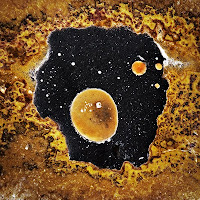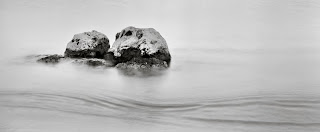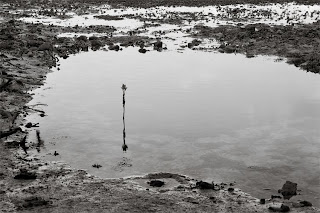
“People say that what we’re all seeking is a meaning for life. I don’t think that’s what we’re really seeking. I think that what we’re seeking is an experience of being alive, so that our life experiences on the purely physical plane will have resonances within our own innermost being and reality, so that we actually feel the rapture of being alive.”
Postscript: Campbell's quote appears in my dad's handwriting on a yellowed strip of paper that accidentally fell out of page 133 of a book he bequeathed me - The Spiritual in Art - as I was thumbing through it for inspiration. Two other quotes adorn the page my dad evidently used Campbell's quote as a placeholder for (the bookmarked page is the first page of the chapter "Transcending the Visible" by Sixten Ringbom that appears on page 131 of the book). The first quote is a 1913 muse by Kandinsky that describes his early dilemma of understanding the "meaning" of an abstract work:
"A terrifying abyss of all kinds of questions, a wealth of responsibilities, stretched before me. And most important of all: what is to replace the missing object? The danger of ornament revealed itself clearly to me; the dead semblance of stylized forms I found merely repugnant... It took a very long time before I arrived at the correct answer to the question: What is to replace the object? I sometimes look back at the past and despair at how long this solution took me."
The second quote is by Georges Vantongerloo (1886-1965, Belgian abstract sculptor and painter): "The great truth, or the absolute truth, makes itself visible to our mind through the invisible."
The synchronicity of these quotes becomes clear when one is informed of these basic facts: (1) the title of my portfolio book is "Seeing the Invisible" (which I produced a few years ago, before knowing of this quote), (2) the very next "project" I am to embark on is an expansion of this same portfolio (the "Seeing the Invisible" project is literally the next item on the "to do" list looking up at me as I type these words), and (3) just yesterday, I chided myself with the words "Andy, why did it take so long?" after finally finding a way catalyze a new series of abstractions (and which will no doubt be the basis of a future blog post). Even after 10 years of not being by my side in person, my dad still somehow manages to find a way to gently nudge my art forward ;-)



































